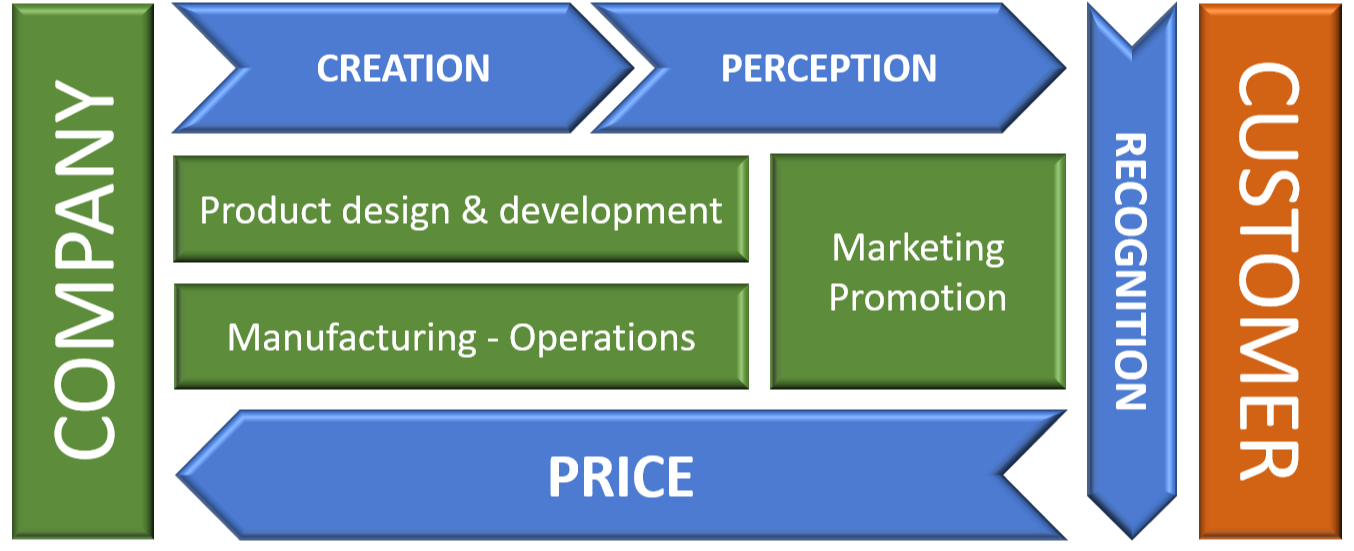
Value is a subjective concept impacting most of our economic decisions, which makes it particularly attractive as a business strategy analysis tool.
In spite of the above, companies and organizations not always use value -at least not in a systematic way- when designing their business models or formulating their strategies. Figuring out the company’s Value Chain, far from being a purely academical exercise, consultants’ jargon or an exercise only valid for big corporations, actually is a powerful and practical tool that can be applied to all business sizes.
Any business’ founder has a clear notion of the value it brings to the market: this is what allows him to attract and keep the first customers, achieve the first sales and make his business grow. When business grows in complexity, diversification and -especially- when its organization grows, it becomes necessary to explicit and share the company’s value creation model so the entire team can organize around it: the company’s Value Chain formulation is a practical and useful tool to do it.
All the company’s resources and processes (design, development, manufacturing and distribution of products and services) are organized around the value creation or capture. The value so created has to be perceived by the customers and recognized through the product price, determined in a competitive environment.
We can design our Value Chain by addressing a series of simple questions (simple to ask, not always to answer):
• What does our product consist of? What does it bring to the customer and how does it do it? This is the value creation source.
• How do we obtain the product? How much time and how many resources are needed to obtain it? The answer will give us the key of the cost of the created value.
• Why our customers buy our product? This is the perceived value.
• What makes our product different from competition? This is the differential value.
• How is our product selling price set? Price represents the recognized value.
If we manage to answer this kind of questions (and/or some other more company/sector -specific ones), we will have in our hands a practical and powerful tool to manage the value creation that, properly shared, will allow teams to align to the Value Chain, the business’ backbone.

By identifying these basic concepts -properly adapted to our business- we will be able to produce action plans to achieve our strategic objectives and scan the markets and segments to address and the ones to avoid. For instance:
• To implement a differentiation strategy in a competitive market, we will focus attention and resources on the product design, development and manufacturing so we can increase our differential value.
• If our strategy aims at growth and market penetration, we will pay attention to increasing the customers’ value perception through marketing and promotion.
• A profit-oriented strategy will aim at maximizing the difference between the recognized value and the cost of the created value. Depending on the market situation and on our product differential value, we will do it through recognized value increase (average price increase), through reduction in the cost of value creation (resources optimization) or through a mix of both.
• A market/segment where -due to much competition or low products differentiation- the price level is too low compared to the value created is a market/segment to avoid.
When we formulate and share with the organization the Value Chain associated to the strategic objectives, we provide to individuals and teams with a simple and autonomous method to identify and discriminate the tasks and processes adding more value -to be potentiated- and those generating less or destroying value – to be suppressed. This is as well an effective method to involve and motivate people, as it creates a direct link between each individual’s contribution and the business backbone: The Value Chain.
JM Noriega 2025